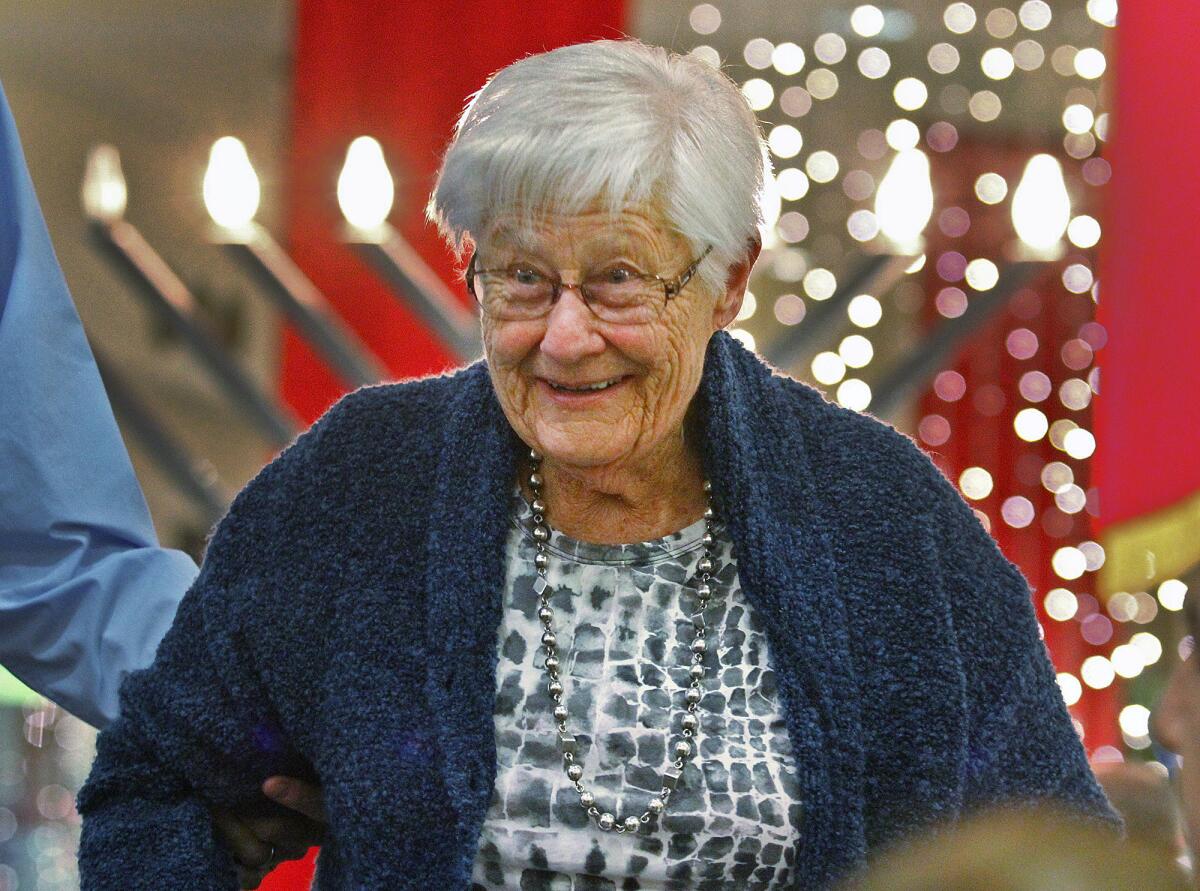Kindertransport survivors tell escape story

Seventy-five years ago, 7-year-old Susanne Goldsmith watched her father wave goodbye, clutching a handkerchief in a crowd of people at a railroad station in Vienna, Austria.
She and her 10-year-old brother had just boarded the Kindertransport, a rescue mission that saved nearly 10,000 Jewish children from Nazis in Germany, Austria and Czechoslovakia in the nine months leading up to World War II.
Photo Gallery: 75th anniversary of Kindertransport that saved 10,000 Jewish refugee children
Burbank residents Goldsmith, 82, and David Meyerhof, whose mother was on the Kindertransport from Berlin, shared their stories at the Burbank Town Center Monday in commemoration of World Kindertransport Day and the 75th anniversary of the mission.
At 17, Meyerhof’s mother lied about her age — the cut-off age was 16 — and escaped Berlin on the Kindertransport one month after Kristallnacht, or the “Night of Broken Glass,” when Nazis smashed windows of Jewish homes, businesses and synagogues.
“It was a signal for all Jewish people to leave in whatever way they could,” Meyerhof said.
“My mother’s story, I believe, is something that needs to be known to everyone,” Meyerhof added. “It’s important for everyone to understand and know what the Kindertransport was, and what it meant and what the Holocaust meant, and how hate and prejudice and discrimination has to be put to an end.”
After Goldsmith left Vienna on the Kindertransport, it would be a year before she saw her parents again. Most of her extended family, she said, ended up in concentration camps and died.
Her parents, however, escaped and showed up a year later at her door in Cogenhoe, a village in England where she was living with foster parents.
And her parents had changed dramatically since she had last seen them.
“They were poorly dressed, their faces were haggard, worried, sick,” Goldsmith recalled. “Those were not the people we left.”
Soon after, the family received visas to travel to the United States and arrived on Feb. 3, 1940 — her 10th birthday.
Once here, they started new lives. Her father, who was an attorney in Vienna, became a gardener, and her mother became a dressmaker.
“I’m one of the lucky ones,” Goldsmith said.
--
Follow Alene Tchekmedyian on Google+ and on Twitter: @atchek.
ALSO:
Burroughs High student earns top score
Dining Out: Sweetsalt might just prove good for your health
Elmoyan’s 22 points leads Burbank basketball to tourney victory